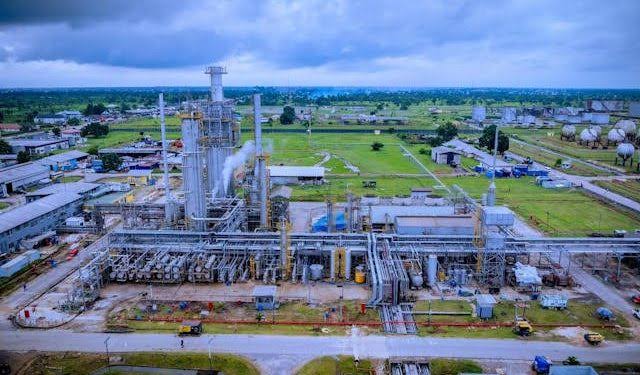The Port Harcourt Refinery, a vital asset in Nigeria’s petroleum sector, has long been the subject of national discourse. After years of dormancy, its Old Refinery, also known as Area 5, has been brought back to life, sparking debates and speculation about its operations. With confirmations from key stakeholders and insights from industry leaders, the true state of this refinery is becoming clearer.
This comprehensive report delves into the facts, dispels rumors, and highlights the transformative potential of the Port Harcourt Refinery’s revival for Nigeria’s energy and economic landscape.
Engr. Tony Ogbuigwe, President of the National Society of Chemical Engineers (NSChE), recently confirmed in an interview with Arise TV and Channel TV that Area 5 of the Port Harcourt Refinery is operational and functioning efficiently. Contrary to widespread skepticism, the refinery has resumed production after being idle for over 20 years. This milestone show significant progress in Nigeria’s drive towards energy independence.
Ogbuigwe described this achievement as a testament to the commitment of the Nigerian National Petroleum Company Limited (NNPCL) to revamp critical national assets. “This isn’t just a restart; it’s a renaissance for Nigeria’s oil refining capabilities,” he said.
Refining crude oil is a complex, scientific process, and the Port Harcourt Old Refinery is producing key petroleum products: straight-run gasoline (light naphtha), heavy naphtha, kerosene, light gas oil (diesel), and fuel oil. These outputs are blended to meet market demands, particularly for Premium Motor Spirit (PMS), achieved by mixing light naphtha with Crack C5 from Eleme Petrochemicals.
Ogbuigwe elaborated, “These products are of high quality and are essential for powering our economy. The refinery’s ability to produce such a wide range of outputs is a step forward in reducing our reliance on imports.”
Currently operating at 60-70% capacity, the refinery is steadily ramping up towards 90%. This increase will not only enhance production volumes but also improve the efficiency and quality of its outputs. The catalytic reforming unit, expected to become operational soon, will further optimize the refinery’s processing capabilities.
“The ultimate goal is to maximize the use of every barrel of crude processed,” Ogbuigwe noted. “With continuous improvements, the refinery can achieve greater efficiency, positioning Nigeria as a significant player in the global petroleum market.”
Despite the promising developments, skepticism has surrounded the refinery’s revival. Allegations surfaced online, claiming the refinery’s operations were staged, and its outputs were not reaching the public. Naysayers argued that the PMS trucked out was “old stock” rather than newly refined products.
NNPCL swiftly countered these claims. In a statement by its Chief Corporate Communications Officer, Olufemi Soneye, the company described such allegations as baseless. Soneye clarified that the refinery operates as an integrated system, with shared utilities between the Old and New facilities. “This integration ensures seamless production and distribution of products,” he said.
NNPCL further confirmed that the refinery is currently producing 1.4 million liters of PMS daily, alongside other products such as diesel and kerosene. These products are actively being loaded onto trucks for nationwide distribution.
The Port Harcourt Refinery has an installed capacity to process 60,000 barrels of crude oil per day. Although it is not yet operating at full capacity, its current output is making a tangible impact on the market. Industry experts estimate that about 200 trucks are now loaded daily, a development that could significantly reduce fuel scarcity and stabilize pump prices.
Read also: Gov. Okpebholo orders urgent review of Edo e-governance platform
Stakeholders and community leaders have corroborated these claims. In a viral video, Dibia Isaiah, Chief Security Officer of Alesa Kingdom and an NNPC Pipelines & Storage Company Loader, confirmed the refinery’s operations. “This morning, I loaded four trucks myself. The refinery is up and running, and business is booming,” he said.
This on-ground testimony aligns with the statements of refinery officials, who maintain that operations, though temporarily scaled down for facility improvements, are progressing smoothly.
The Port Harcourt Refining Company (PHRC) clarified that its recent reduction in operations was a strategic decision to accommodate ongoing facility upgrades. Executive Director of Operations at the Nigerian Pipeline and Storage Company Limited (NPSC), Moyi Maidunama, explained that product distribution continues, albeit at a slower pace.
“We are managing the process with the number of trucks available while improving our infrastructure. Once upgrades are completed, operations will return to full capacity,” Maidunama assured.
The refinery’s revival is a major milestone in Nigeria’s quest for energy security and economic diversification. Former Labour Party presidential candidate, Peter Obi, commended the NNPCL for this achievement, noting its potential to alleviate economic burdens and boost productivity across the country.
“The impact of this revival will be felt in transportation, trade, and industry. It’s a step towards a new Nigeria,” Obi remarked.
Despite the progress, challenges persist. The low turnout of tanker drivers and limited operational loading bays have affected distribution efficiency. Terminal Manager Molokwuu Joel highlighted these issues, urging petroleum marketers to increase the availability of loading trucks.
Nevertheless, stakeholders remain optimistic. With 11 operational loading bays capable of handling three trucks every 15 minutes, the refinery is well-positioned to scale up operations once logistical hurdles are addressed.
The revival of the Port Harcourt Old Refinery is more than a technical achievement; it is a symbol of Nigeria’s commitment to self-reliance in the energy sector. As the refinery continues to ramp up capacity, it holds the promise of reducing dependency on imports, stabilizing fuel prices, and bolstering the national economy.
While skepticism and challenges remain, the evidence suggests that the Port Harcourt Refinery is on the right track. Transparency, efficiency, and sustained investment will be crucial to maintaining this momentum and achieving long-term success.
As Nigeria celebrates this milestone, it is clear that the refinery’s revival marks the beginning of a new chapter in the country’s journey towards energy independence and economic growth.
